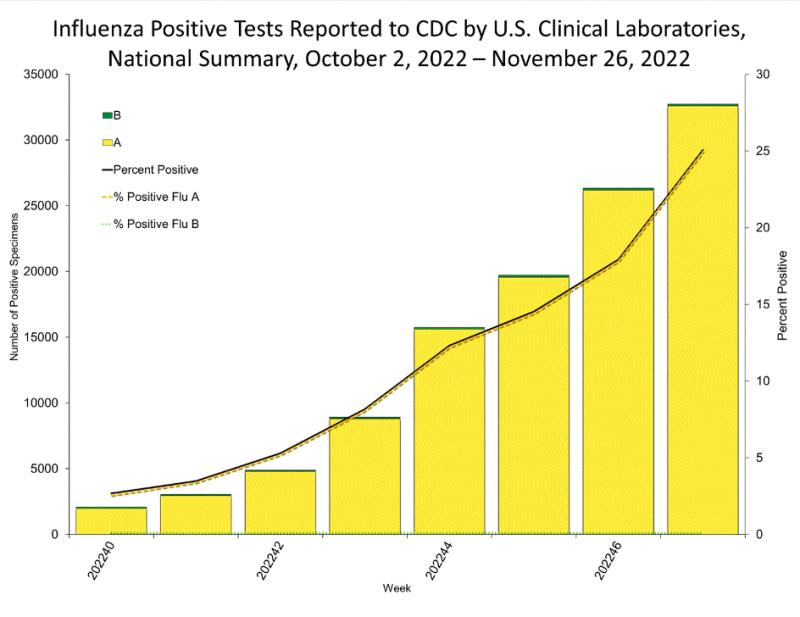Masking. Social distancing. Hand-washing. These sound all too familiar to anybody who lived through the last two years of the COVID-19 pandemic.
COVID-19 still threatens, but this time experts say the mitigation efforts used against SARS-CoV-2 might be needed against A(H3N2), the strain of influenza that’s sending more people to the hospital for that virus than since the 2017-18 flu season, according to the Centers for Disease Control and Prevention (CDC).
The number of individuals admitted to the hospital for flu last week nearly doubled from the prior week, according to the CDC, and most health experts attribute that to indoor gatherings over the Thanksgiving holiday.

Masking, social distancing and hand-washing during the waves of COVID-19 may have made us more susceptible to flu and respiratory syncytial virus (RSV), a disease that can be particularly hard on children.
So is flu: The people most susceptible are the very young, ages 4 and under, and the very old, ages 85 and older.
Scott Hensley, Ph.D., an immunologist at the University of Pennsylvania, told Nature that the mitigation efforts against COVID-19 may have made us “more immunologically naive than what we would expect in most years.”
For instance, Hensley said, most children get RSV by their second birthday. This year, “you’re going to end up having kids that are 3, 4 years of age right now who have never seen RSV.”
And as for the flu, Hensley told Nature: “These viruses are coming back, and they’re coming back with a vengeance. It is possible that this year will be sort of the granddaddy of them all in terms of flu.”
The CDC says that 7.5% of outpatient medical visits last week were because of flu-like symptoms. The estimates have not yet been verified by laboratories, and the numbers may include RSV and COVID-19. But it’s the flu that—for the moment—concerns health officials the most. The CDC says 79% of the flu cases are A(H3N2), while 21% have been A(H1N1).
Flu season usually doesn’t really kick in until December and January, but, this year, it hit in October. That, along with RSV, has kept hospitals, physicians and other healthcare providers busy.
The resurgence of the flu comes after two years of record-breaking low transmission attributed to the mitigation efforts against COVID-19. The CDC noted that “the cumulative rate of laboratory-confirmed influenza-associated hospitalizations in the 2020-2021 season was the lowest recorded since this type of data collection began in 2005.”
In addition, so far this season there have been at least 8.7 million illnesses, 78,000 hospitalizations and 4,500 deaths from the flu.
The CDC continues to encourage individuals to get the flu vaccine and is concerned vaccine coverage for pregnant individuals has been lower than it was last year.
“Flu vaccination coverage for pregnant persons was lower for all race/ethnicity groups at of the end of October 2022 compared with the end of October 2021,” according to the CDC.